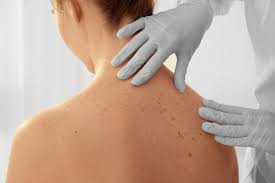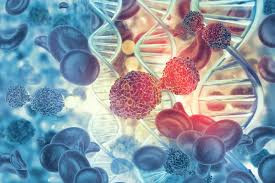Global Skin Cancer Cases Surge Among Older Men Over Past 30 Years, New Study Reveals

IIE DIGITAL DESK : The recent comprehensive study has brought to light a significant rise in skin cancer cases among older men worldwide over the last three decades. The findings highlight a worrying trend that underscores the need for enhanced awareness, early detection, and preventive measures targeted especially at aging male populations.
The study, published in a leading medical journal, analyzed global health data spanning 30 years, tracking incidence rates of various skin cancers including melanoma and non-melanoma types. Researchers found that while skin cancer remains a major health concern across all demographics, the most pronounced increase in new cases has been observed among men aged 60 and above.
Experts attribute this surge to multiple factors, including prolonged exposure to ultraviolet (UV) radiation, lifestyle changes, and improved diagnostic capabilities. Older men are particularly vulnerable because of cumulative sun exposure accumulated over their lifetimes, often exacerbated by occupational and recreational habits such as outdoor work and sports without adequate sun protection.
The study points out that skin cancer rates have nearly doubled in some regions, with Australia, North America, and parts of Europe showing the steepest increases. However, developing countries are also witnessing rising numbers due to changing environmental and behavioral patterns.
Skin cancer is caused primarily by damage to the skin’s DNA from UV rays emitted by the sun or tanning beds. Melanoma, the deadliest form, develops from pigment-producing cells and can spread rapidly if untreated. Non-melanoma cancers, including basal cell carcinoma and squamous cell carcinoma, are more common but generally less aggressive.
Dr. Anil Mehta, one of the lead researchers, commented on the findings: “The rise in skin cancer among older men is alarming but not unexpected. Many have accumulated significant UV damage over decades without consistent protective measures. This calls for urgent public health initiatives focusing on education about sun safety and regular skin screenings.”
The study also revealed disparities in skin cancer outcomes, with older men less likely to engage in preventive behaviors or seek medical advice promptly compared to women and younger individuals. This delay in diagnosis often leads to more advanced disease stages at presentation, complicating treatment and reducing survival rates.
Healthcare professionals emphasize the importance of early detection through regular self-examinations and dermatologist visits. Symptoms such as new or changing moles, sores that do not heal, and unusual skin growths should prompt immediate medical consultation.
Public health agencies worldwide are encouraged to intensify campaigns promoting sun-safe habits including the use of sunscreen, wearing protective clothing, and avoiding peak sunlight hours. Additionally, the implementation of skin cancer screening programs for high-risk groups, especially older men, could significantly reduce morbidity and mortality associated with the disease.
The study’s authors also call for further research into genetic, environmental, and lifestyle factors contributing to the increased incidence among older men to develop more targeted prevention and treatment strategies.
The global surge in skin cancer cases among older men over the past 30 years signals a critical public health challenge. With the aging population growing worldwide, addressing this issue through education, prevention, and early detection is imperative to curb the rising burden of skin cancer and improve outcomes for at-risk groups.
You might also like!















